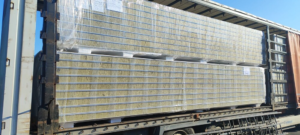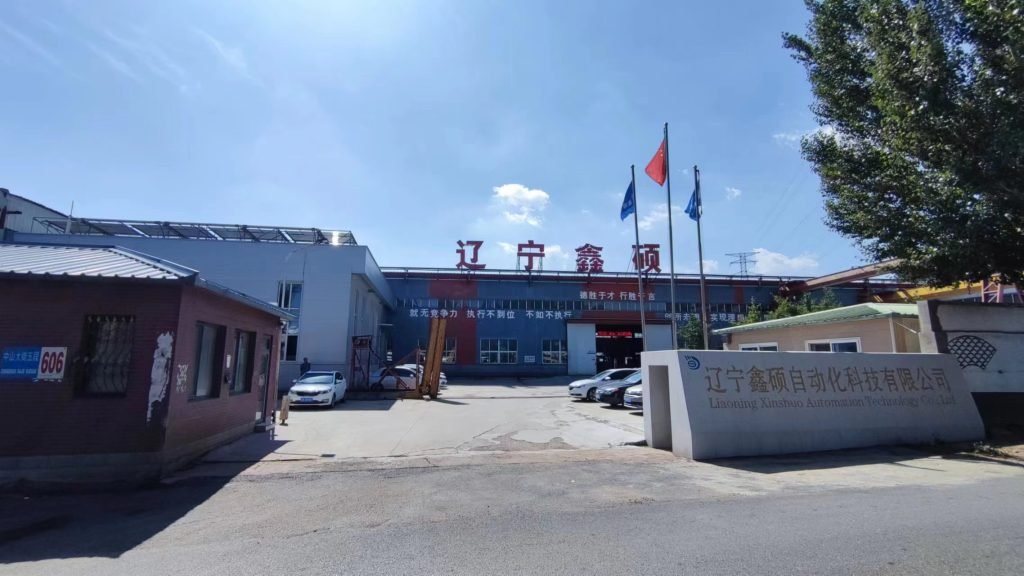The construction industry has always been a significant contributor to the global economy. However, over the years, the demand for more sustainable, efficient, and cost-effective building solutions has led to the development of innovative technologies and materials. One such advancement is the use of sandwich panels. Sandwich panel production lines have become a game-changer in the construction sector, offering numerous benefits in terms of speed, cost-efficiency, and energy performance. This article will explore how sandwich panel production lines are revolutionizing the construction industry, the advantages of sandwich panels, and the future of these production technologies.

What are Sandwich Panels?
Sandwich panels are composite materials consisting of two outer layers and a core material that is sandwiched between them. The outer layers are typically made from materials such as steel, aluminum, or fiberglass, while the core is usually made from lightweight materials such as polyurethane, polystyrene, or mineral wool. This unique structure provides a combination of strength, insulation, and lightweight properties, making sandwich panels an ideal solution for a variety of construction applications.
The core material is responsible for providing thermal insulation, while the outer layers provide durability and strength. This makes sandwich panels an excellent choice for use in buildings that require both structural integrity and energy efficiency.
The Role of Sandwich Panel Production Lines
A sandwich panel production line is an automated system that manufactures sandwich panels in a continuous process. The line typically consists of several stages, including:
- Core Material Preparation: The first stage involves preparing the core material, which is cut to the required thickness and shape. This material is usually in the form of a foam, such as polystyrene or polyurethane.
- Outer Layer Coating: In this stage, the outer layers, typically made from steel or aluminum, are coated with protective materials to improve their durability and resistance to environmental factors.
- Lamination: The core material is then sandwiched between the outer layers and laminated together. This process ensures a strong bond between the core and the outer layers, providing the required strength and insulation properties.
- Cutting and Shaping: Once the sandwich panels are laminated, they are cut to the required length and shape for various construction applications. This stage allows for the production of panels with different dimensions, depending on the specific needs of the project.
- Quality Control: The final stage of the production line involves rigorous quality control checks to ensure that the panels meet industry standards for strength, insulation, and overall quality.
Advantages of Sandwich Panels in Construction
Sandwich panels offer numerous advantages that make them an attractive option for modern construction projects. Some of the key benefits include:
1. Energy Efficiency
One of the main reasons sandwich panels are so popular in the construction industry is their superior insulation properties. The core material, which is often made from polyurethane or polystyrene foam, provides excellent thermal insulation, helping to regulate indoor temperatures and reduce energy consumption. This can lead to significant cost savings on heating and cooling, especially in large buildings.
| Material | Thermal Conductivity (W/mK) |
|---|---|
| Polystyrene Foam | 0.031 |
| Polyurethane Foam | 0.022 |
| Mineral Wool | 0.035 |
The table above shows the thermal conductivity of different core materials used in sandwich panels. As you can see, polyurethane foam has the lowest thermal conductivity, making it an excellent choice for energy-efficient construction.
2. Quick Installation
The lightweight nature of sandwich panels makes them easy to handle and install. This can significantly reduce the construction time of buildings, especially when compared to traditional building materials such as concrete or brick. The panels can be quickly assembled on-site, allowing for faster project completion and reduced labor costs.
3. Cost-Effective
Sandwich panels are not only efficient in terms of energy but also cost-effective. The materials used in their production are relatively inexpensive, and the manufacturing process is automated, which helps to reduce labor costs. Additionally, the energy savings provided by the insulation properties of sandwich panels can result in long-term cost reductions, making them an excellent investment for both residential and commercial projects.
4. Durability and Strength
Despite their lightweight nature, sandwich panels are incredibly strong and durable. The outer layers, made from materials such as steel or aluminum, provide excellent protection against environmental factors such as moisture, corrosion, and UV radiation. The panels are also resistant to fire, making them a safe choice for a wide range of construction applications.
5. Sustainability
With increasing awareness of environmental issues, sustainability has become a top priority in the construction industry. Sandwich panels contribute to sustainable building practices by reducing energy consumption, minimizing waste, and utilizing recyclable materials. The production process itself is also more environmentally friendly compared to traditional construction methods, as it generates less waste and requires fewer resources.

Applications of Sandwich Panels in Construction
Sandwich panels are used in a wide variety of construction applications due to their versatility and performance. Some common applications include:
- Industrial Buildings: Sandwich panels are often used in the construction of warehouses, factories, and other industrial buildings. The panels provide excellent thermal insulation, helping to maintain a consistent temperature inside the building.
- Commercial Buildings: Sandwich panels are also used in the construction of commercial buildings, including offices, shopping centers, and hotels. The panels help to improve energy efficiency and reduce operational costs.
- Residential Buildings: In residential construction, sandwich panels are used for walls, roofs, and facades. They offer homeowners a cost-effective way to improve energy efficiency and create a comfortable living environment.
- Cold Storage Facilities: Sandwich panels are commonly used in the construction of cold storage facilities, such as refrigerated warehouses and food processing plants. The insulation properties of the panels help to maintain a consistent temperature, ensuring the safe storage of perishable goods.
- Clean Rooms and Laboratories: Sandwich panels are also used in the construction of clean rooms and laboratories, where temperature control and contamination prevention are critical. The panels provide excellent insulation while maintaining a sterile environment.
Future Trends in Sandwich Panel Production
As technology continues to advance, the production of sandwich panels is expected to become even more efficient and innovative. Some future trends include:
- Automation: The use of robotics and AI in sandwich panel production lines will further streamline the manufacturing process, reducing labor costs and improving precision.
- Smart Panels: The integration of smart technologies into sandwich panels, such as sensors for temperature control and energy monitoring, will help make buildings even more energy-efficient and sustainable.
- Recyclable Materials: As sustainability becomes even more important, sandwich panels may be made with 100% recyclable materials, further reducing their environmental impact.
- Customization: Advances in production techniques will allow for more customization of sandwich panels, enabling them to meet the specific needs of different projects.
Conclusion
Sandwich panel production lines are revolutionizing the construction industry by offering an efficient, cost-effective, and sustainable solution to modern building challenges. With their superior thermal insulation, quick installation, and durability, sandwich panels are quickly becoming the material of choice for a wide range of construction projects. The continued advancements in production technologies will only increase the appeal of sandwich panels, making them an essential part of the future of construction.
Our company specializes in manufacturing and supplying high-quality sandwich panel production lines. If you are interested in incorporating sandwich panels into your next construction project or need a reliable production line for your business, please don’t hesitate to contact us. We are here to provide you with the best solutions tailored to your needs.



